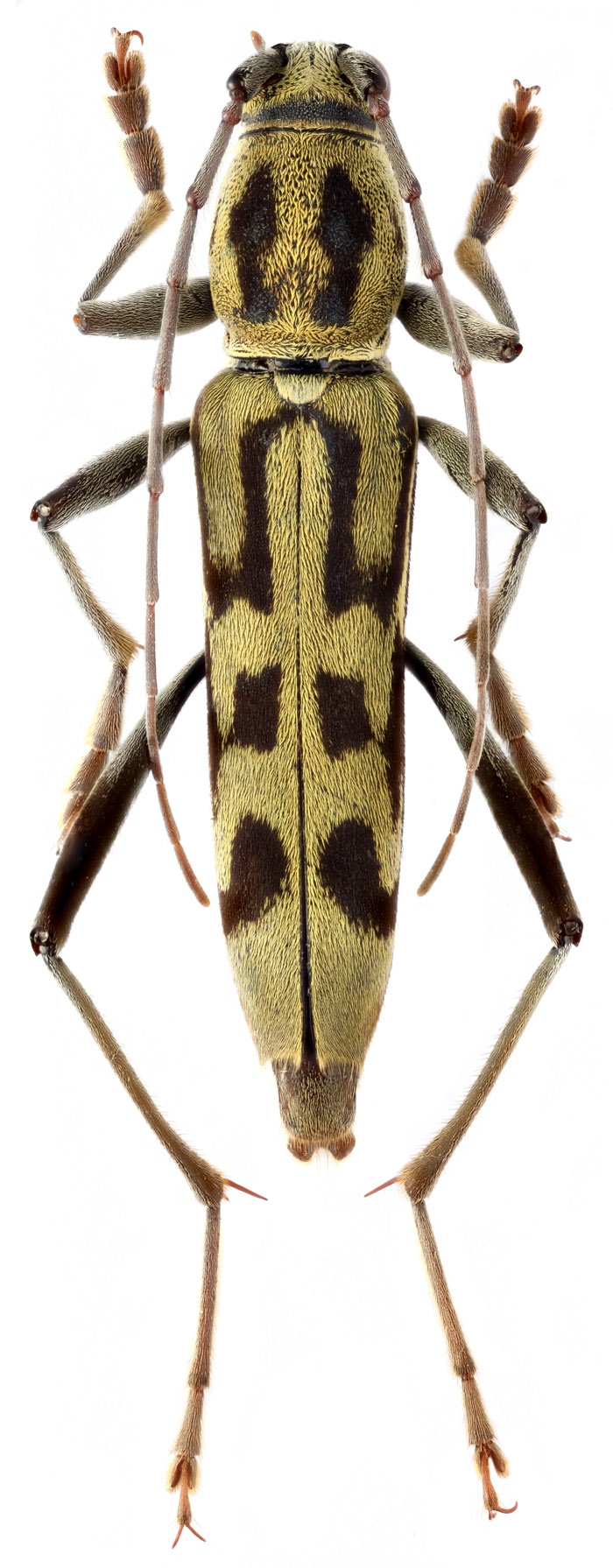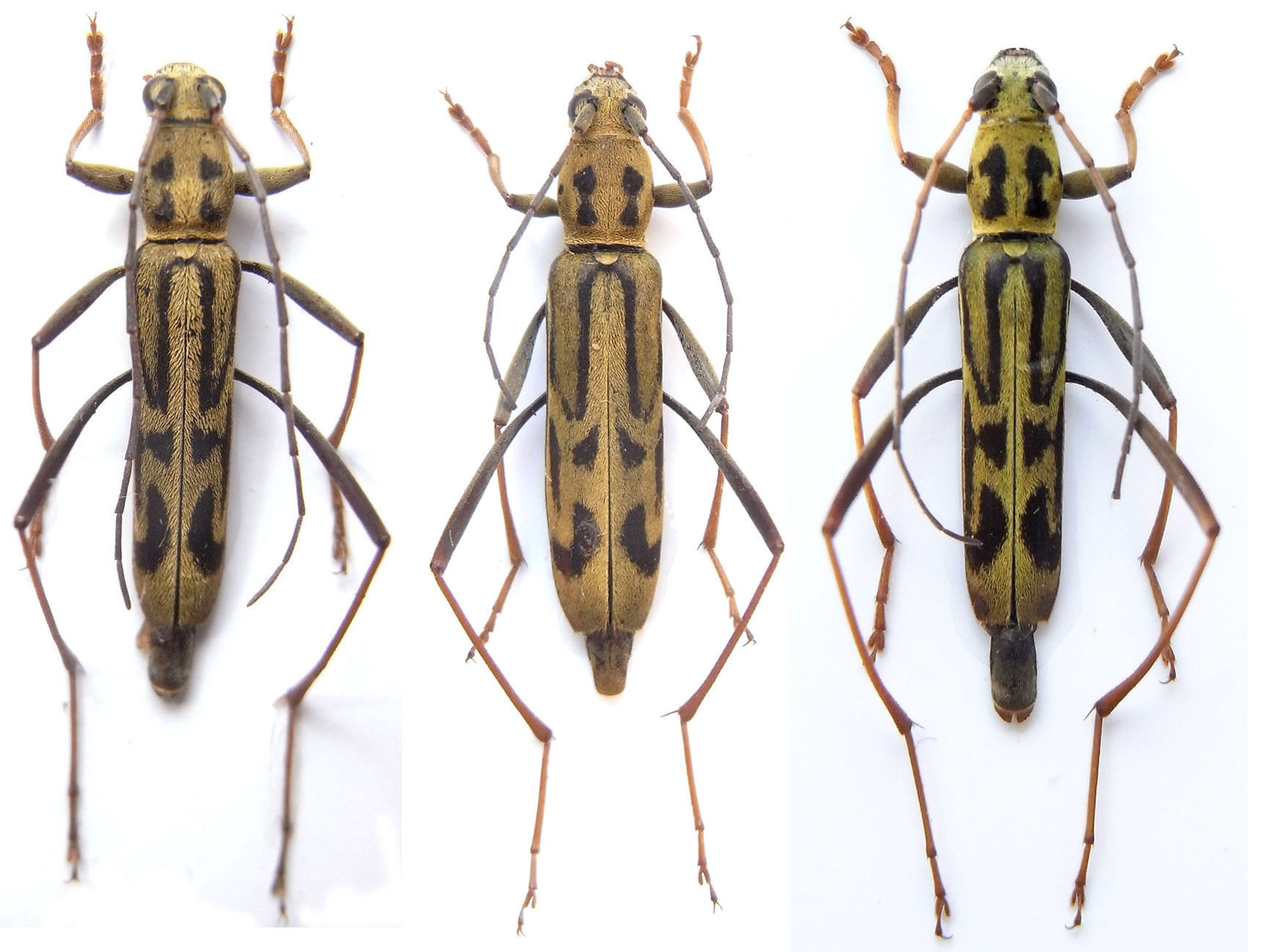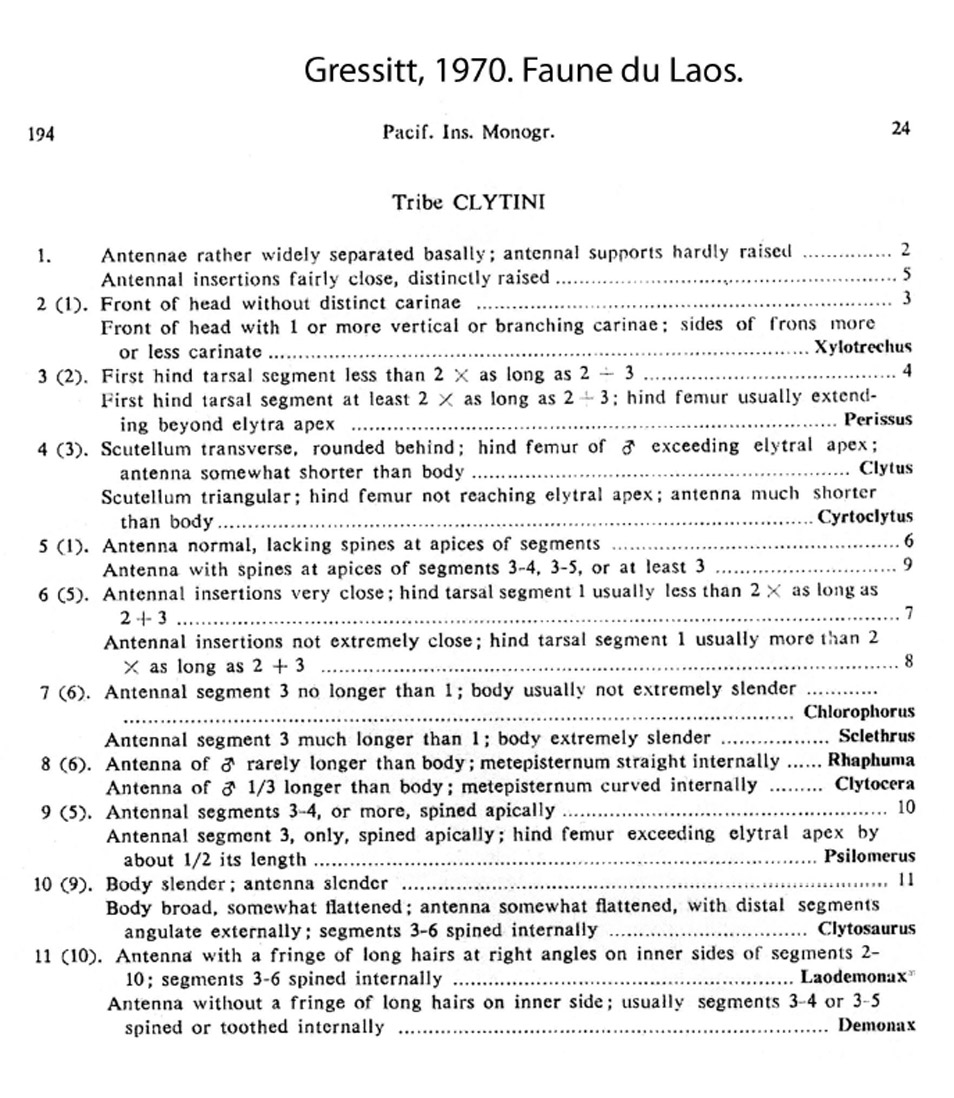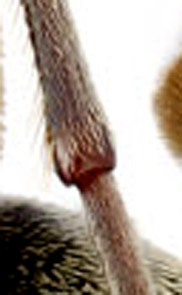| T O P I C R E V I E W |
| Max |
Posted - 16/01/2012 : 22:52:19

Another vietnamese Rhaphuma.
Probably, Rh. anongi Gressitt & Rondon, 1970?
I don't sure...
S Vietnam, Lam Dong prov., male, 16 mm |
| 15 L A T E S T R E P L I E S (Newest First) |
| Max |
Posted - 01/09/2018 : 18:45:04
Yess.. That thing looks a lot better in that role. Thanks a lot!  |
| Xavier |
Posted - 01/09/2018 : 09:15:23
Rhaphuma improvisa Holzschuh, 1991 seems ok for me. But this species is possibly a Demonax... |
| Xaurus |
Posted - 01/09/2018 : 00:09:50
yes R. improvisa was also my first Intention for this sps because of the similar 8. tergite, please check it after preparation |
| Xavier |
Posted - 31/08/2018 : 21:52:31
The first band seems longer too, but have a look to Rhaphuma improvisa Holz. here. |
| Max |
Posted - 31/08/2018 : 19:37:20
My beetles (I have a female of this sp. too) with very short first elytral band are not a R. quadrimaculata, I agree. |
| Xavier |
Posted - 30/08/2018 : 01:10:38

312.33 KB
If it could help, here 3 specimens from north Laos that I suppose to be Rhaphuma quadrimaculata Pic, 1923.
Holotype specimen of R. quadrimaculata is visible here. |
| Max |
Posted - 30/08/2018 : 00:37:27
I do not know either However I`ll prepare it. I need to see what`s inside it. However I`ll prepare it. I need to see what`s inside it. |
| Xavier |
Posted - 30/08/2018 : 00:10:07
It is not R.quadrimaculata, even the drawing is close to. And may be I am wrong and it is not a Demonax ? Really, I do not know. |
| Max |
Posted - 30/08/2018 : 00:09:03
Yes Xavier, I agree. It`s understandable. Gressit`s key based on these "spines" (it`s simply key for some area). And your idea was based on the same thing too. Look at Rh. diminuta or Rh. gracilipes please (I haven`t good photo right now). If it`s really Rhaphuma`s species as is customary so what are the differences with Demonax? |
| Xaurus |
Posted - 29/08/2018 : 23:57:14
this sps is very near to R. quadrimaculata and R. quercus with a conspicuous 8. tergite, the apex is visible at Max's spm,
you should prepare the genitals of your male spm, R. anongae has a different 8. tergite |
| Xavier |
Posted - 29/08/2018 : 23:38:29
Sorry Max, but several Demonax have an identical very short "spine" or "tooth" as your species. Because of that small tooth, some Demonax have been described in genus Rhaphuma : Rhaphuma dimidiata Chevrolat, 1863 is now Demonax dimidiatus (Chevrolat, 1863)...But you are right : may be some other Rhaphuma species should be included in Demonax genus.
Anyway, that's why I check both list, Demonax and Rhaphuma species, when I try to find an ID for a species,
Here the key from Gressitt(1970) for the Clytini fauna of Laos...

266.99 KB |
| Max |
Posted - 29/08/2018 : 22:57:08
Well I`m don`t know what is "Demonax" and "Rhaphuma". This feature as small spikes on antennal joints after 3 I can see even for a Rh. gracilipes, Rh. diminuta, Rh. innotata (dissected ex.). So, I have nothing against it if these species will ever Demonax. But I would like to distinguish these two genus on the basis of more serious characters I`m don`t know what is "Demonax" and "Rhaphuma". This feature as small spikes on antennal joints after 3 I can see even for a Rh. gracilipes, Rh. diminuta, Rh. innotata (dissected ex.). So, I have nothing against it if these species will ever Demonax. But I would like to distinguish these two genus on the basis of more serious characters |
| Xavier |
Posted - 24/08/2018 : 17:32:48
I think it is not a Rhaphuma, but a Demonax sp.

29.81 KB |
| Max |
Posted - 22/01/2012 : 00:50:14
I have else the corresponding female with the same label, it looks as quadrimaculata (parted spots on pronotum) but with preapical spot, as beside anongi.
But this not so it is important, in my opinion.
The Type anongi looks less elongated and another form of front spots on elytra (beside quadrimaculata sharp, long not dispersing, parallel spots - I seem it is enough typical).
I have named these my beetles quadrimaculata... And... No, it is different species, for me.
Thanks a lot for the pictures of type! |
| Francesco |
Posted - 21/01/2012 : 11:31:52

... and this is the type of Rhaphuma anongi, a female with 2 bands on the pronotum.
Actually, the preapical spot of the elytra has a very different shape, but if you look for other "anongi" in this Forum, you will notice a certain variability.
Your specimen has 2 bands like anongi but the preapical spot like quadrimaculata.
Only one species or two? |


